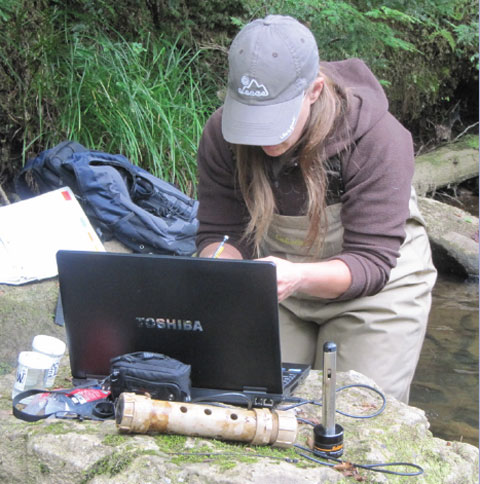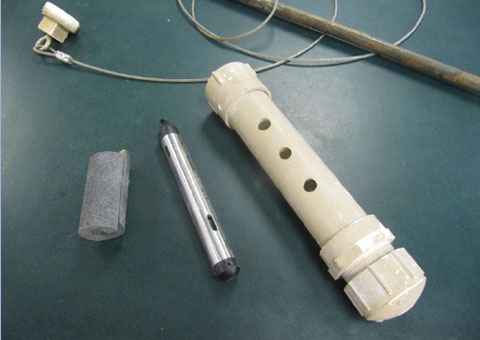 LTC Levelogger Junior dataloggers are
LTC Levelogger Junior dataloggers are
calibrated in the field before deployment
The Clarion River was once thought to be the most polluted waterway in Pennsylvania. Now, after decades of cleanup efforts, it has sections designated as part of the National Wild and Scenic River program in the USA. Communities value it for recreation, habitat for wildlife, and in Elk County, Pennsylvania, the tributaries and underground springs that flow into the Clarion River are the primary source of drinking water.
In recent years, there has been increasing development of the Marcellus Shale in the area, including hydrofracking. This has spurred a new monitoring program into action.
Elk County Conservation District’s Watershed Specialist, Kim Bonfardine, is leading the Elk County Water Monitoring Project. The Project is designed to collect baseline water quality data throughout Elk County. This encompasses all watersheds the County crosses, portions of the Allegheny forest, and other tributaries of the Allegheny and Susquehanna Rivers.
The program aims to gather pre-drilling water quality data. It will also provide on-going real-time data to act as an alarm system for an changes in water quality, or pollution events that may occur as nearby operations intensify.
One hundred percent of funding for the program is being provided through grants from two private, local foundations; the Colcom Foundation in Pittsburg and Stackpole-Hall Foundation in St. Marys.
The program includes the use of the Solinst LTC Levelogger Junior to monitor changes in water level, temperature, and conductivity in rivers and streams. Conductivity readings provide a general indication of the water quality, while the water level and temperature readings may be used to provide background information when any spikes or significant changes in conductivity readings are noticed.
The project started by placing the Leveloggers in various streams, for two weeks each season to record baseline data, and to track any seasonal changes.
 Duncan Gatenbee, an undergraduate research student,
Duncan Gatenbee, an undergraduate research student,
downloads data using a Leveloader Gold.
The Leveloggers are being circulated throughout the watersheds to ensure baseline data is collected in all areas of the County. Currently, twelve LTC Levelogger Junior dataloggers are installed, and set to record
every 15 minutes. Some Leveloggers are installed for 6 months, and some are to be deployed for up to a year to collect long-term data.
The Leveloggers are installed in PVC housings, and held in place using a foam sleeve. The PVC housings are tethered to a metal stake using a length of wire. The stakes are used to secure the housings in the deeper parts of the streams.
Kim Bonfardine has been pleased with the performance of the Leveloggers, saying “the ease-of-use, and simplicity of calibration and data downloading have been very positive factors, they are accomplished in the field with the use of a laptop and Levelogger Software.”
A goal of the program is to create an online database that is accessible to all residents of Elk County. The database will include all new data collected, as well as historical data dating back to the 1940’s.
The program will allow the watershed to be monitored in real-time, and allow trends to be tracked. It will help ensure a safe, clean water supply in Elk County.
Solinst thanks Elk County Conservation District Watershed Specialist Kim Bonfardine for providing the details of this project.
